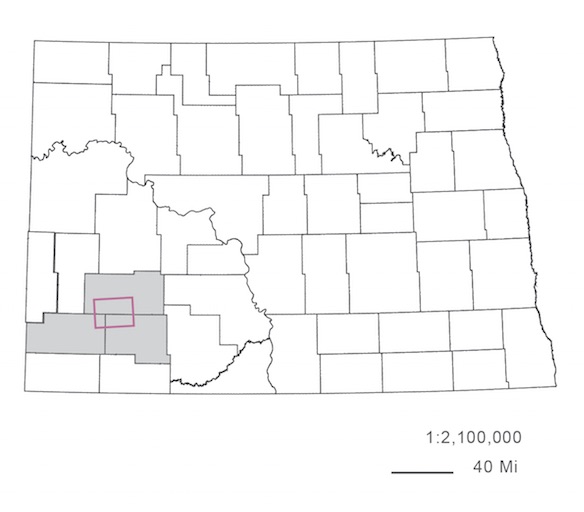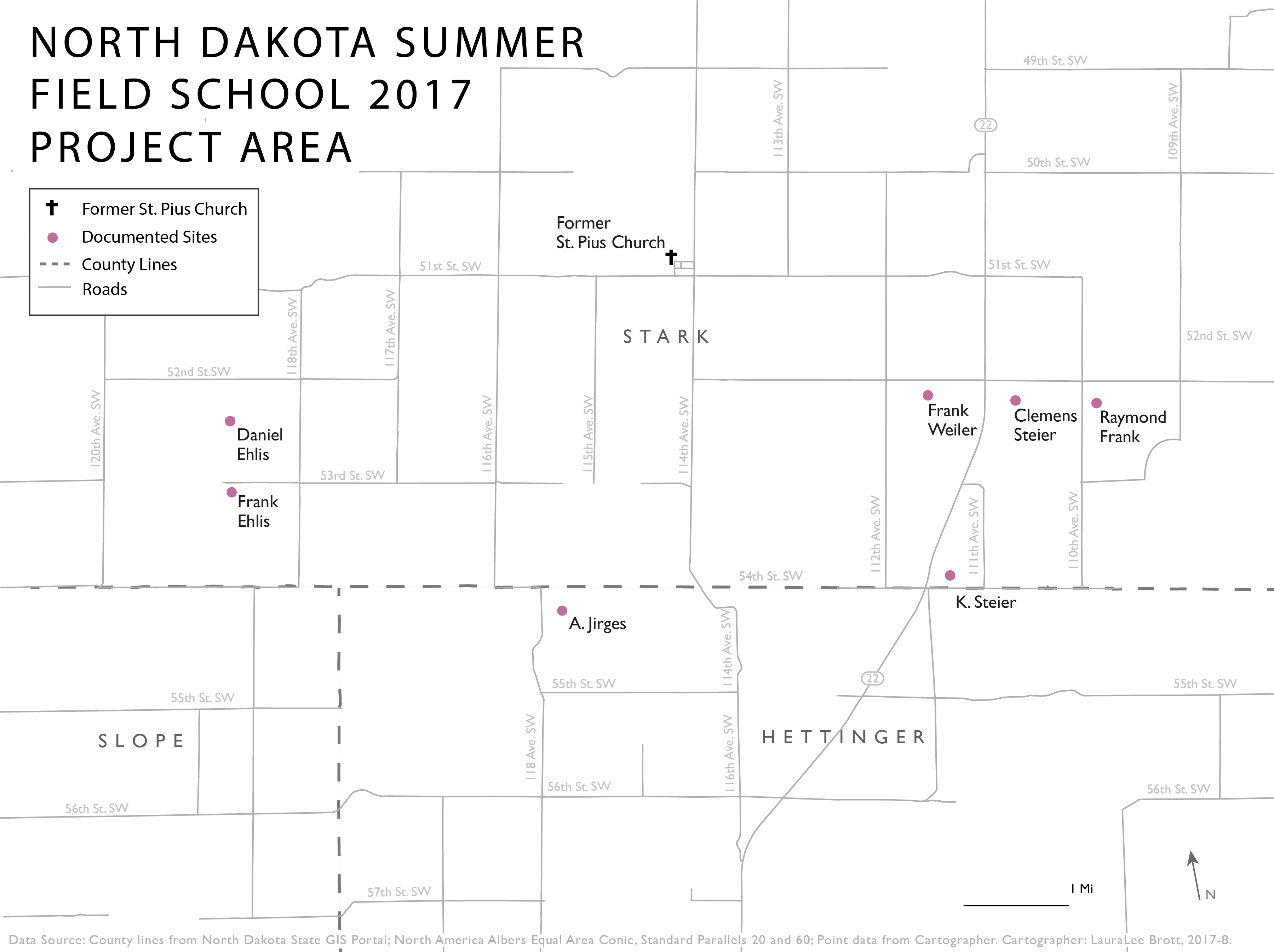Main Body
Chapter 1: Introduction
Anna Andrzejewski
This e-book presents the findings of a fieldschool class held for four weeks in the summer of 2017. The basis of the class was to examine afresh a series of historic buildings in Hettinger and Stark Counties, North Dakota. The buildings examined have ties to the settlement history of the Germans from Russia, who came to the region during the late nineteenth and early twentieth centuries.[1] This immigrant group settled throughout the American Great Plains, including in this part of southwestern North Dakota, during the first two decades of the twentieth century.

The premise behind the class was that research on these buildings would enrich the received story of the Germans from Russia in this region. Some previous preservation efforts have occurred in the vicinity of the project area (such as at the Hutmacher Farm, which has been documented by the Historic American Buildings Survey of the National Park Service), and several books and articles have broadly discussed some of the important cultural contributions of the Germans from Russia in the history of North Dakota, including some findings about their architecture. However, the class aimed to yield fresh research both by documenting the history of previously unstudied historic buildings and also using information gleaned from research in the archives and through interviews with local residents to draw fresh conclusions.
The class examined seven farmsteads containing buildings built during the first quarter of the twentieth century in the vicinity of the unincorporated village of Schefield, located in Stark County just north of the boundary with Hettinger County. Although the farmsteads selected were chosen on the basis of potential ties with settlers who may have been Germans from Russia, the findings from research on these buildings and from interviews with local residents told a more nuanced tale. Instead of simply reflecting “German-Russian” ways, the farmsteads show how settlers in this area adapted to novel ways of life in the plains climate and forged a new culture over several generations of settlement.

Part of the story directly relates to the prairie landscape itself. Many of the buildings were built of rock gathered from farm fields, trees being rare on the rolling grasslands encountered by the homesteaders upon their arrival in the region around 1900. Moreover, the siting of some of the farm buildings – in valleys protected by hills and with few north facing windows – relates directly to the harsh North Dakota winters, as settlers sought to shield their farmsteads from the prairie’s bone chilling winds. Other aspects of the story involve the fact that the Germans from Russia were not the only ethnic group to settle in this area. They were joined by homesteaders from other ethnic groups, including German-Hungarians, Bohemians, Ukrainians, and Poles, who, like the Germans from Russia, sought to make their home in a new land under the stipulations of the Homestead Act. Over time, these groups intermixed and intermarried, just as modern changes also affected how and what they built.

To understand the “German-Russian” ancestry of the homesteaders thus is only part of the story told in this e-book. The story that unfolds in subsequent pages is ultimately less a story of the transfer of ideas from eastern Europe to the northern Great Plains, but rather a story of adaptation to new ways of life on the prairie frontier. In these buildings we see old ways gradually giving way to the new, something also evident in our informants’ stories across the twentieth century.
In the pages that follow we tell this story in hopes of stimulating further research on these historic folk farmsteads and the history of their occupants.
- The history of the Germans from Russia is more fully detailed in Chapter 3 of this e-book. ↵
